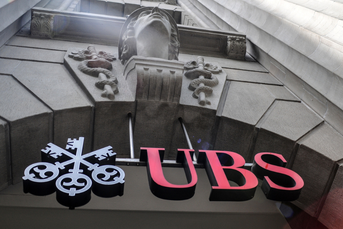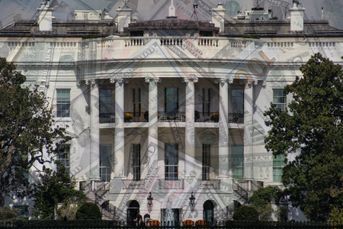FX markets pivot as rate-hikes in some EMs look more likely

Buying local currency becomes riskier as rate cut bets fade.
Global investors are unwinding bets on local-currency bonds as some emerging-market central banks come under pressure to raise interest rates — rather than cut them as widely anticipated just weeks ago.
Money managers differ on the roster of countries that may have to tighten monetary policy in response to a changed global landscape, but among them are turbulent economies such as Turkey and South Africa, and even emerging giants like India and Mexico. Whether those nations will actually raise borrowing costs depends in part on moves in currencies and commodities in the coming weeks to months.
But fears of a delayed easing cycle are already upending the most popular trade at the start of the year: buying local-currency bonds seen as benefiting from rate cuts. A Bloomberg gauge of the asset class posted the biggest monthly decline since September, erasing $62 billion in market value. Carry trades have slumped to the deepest losses since 2021 and breakeven rates are spiking from South Africa to Mexico.
“Certain countries stand out as potentially vulnerable to enacting rate hikes,” said Cliff Ambrose, founder and wealth manager at Apex Wealth in Danvers, Massachusetts. “Those overly reliant on external financing, exposed to commodity-price fluctuations, or grappling with political instability may face greater challenges.”
He listed India, Turkey, Indonesia, Mexico, Brazil and South Africa as the most exposed.
The greenback has rallied against 31 of the 32 most widely-traded emerging-market currencies since April 10, when US inflation data came in higher than anticipated and pushed money-market investors to prune wagers for Fed rate cuts. That coincided with a return of inflation in a number of developing nations from Indonesia to Israel and Mexico.
This has interrupted a dovish pivot that emerging economies made in the middle of 2023 amid expectations that global disinflation would help the Fed
Meanwhile, concerns over the Middle East are returning. Even in the absence of an escalation, calls for international sanctions against Iran could pose a risk to oil prices and shipping supply lines, according to Omotunde Lawal, head of EM corporate credit at Baring Investment Services.
“If inflation truly does show signs of resurgence, the vulnerable segments would be largely the crude importers who may need to be more vigilant,” she said. “Vulnerable countries in this space would include India, Turkey, China.”
Even countries with high nominal rates, which were investor darlings until weeks ago, are being dumped as Treasury yields turn juicier. Among the worst-performing currencies in April were Mexico’s peso, one of the carry-trade favorites, and Indonesia’s rupiah, which resumed a slide even after a rate hike on April 24. In the local-bond market, Philippines, Mexico, Brazil and Colombia underperformed despite offering high real yields.
For Monex Europe Ltd., the center of the debate about emerging-market rate hikes is Asia.
“The recent rally in commodity indexes and Treasury yields at a time when regional growth is re-accelerating makes the prospect of another round of rate hikes credible in the coming months,” said Simon Harvey, the firm’s head of FX analysis. “This is especially the case for central banks in export-oriented economies that are facing current-account deficits, higher inflation and higher levels of external debt.”
SHRINKING SPREADS
For now, negative real rates have again begun to sweep across emerging markets. Emerging Europe, the Middle East and Africa fare worst in this regard, with Angola, Egypt, Nigeria, Turkey and Zambia keeping their borrowing costs below consumer-price growth levels. That’s despite high nominal policy rates ranging from 12.5% to 50%.
Earlier expectations for rate cuts pushed bond yields so low that the average rate on the Bloomberg Global EM Local Currency Government Universal Index stands at 4.61%, 38 basis points below the two-year Treasury yield.
SHALLOWER CYCLES
Some strategists and money managers see the risk of rate hikes confined to a handful of vulnerable countries, and are optimistic that the bulk of emerging markets can manage pressure on their currencies by merely delaying their interest-rate cuts.
Already, Hungary has slowed its pace of cutting pledged not to rush further moves. Poland has signaled borrowing costs will stay unchanged for the rest of the year. The Czech Republic is also debating the pace of easing ahead.
“We expect shallower easing cycles from many of the EM central banks,” said Phoenix Kalen, head of EM research at Societe Generale SA. “But it is a very high bar to imagine that some of them would have to hike this year.”
But Turkey may have to raise borrowing costs to bolster its inflation-fighting credibility against a backdrop of sharp lira depreciation and resurgent inflation, she said. Egypt is vulnerable too.
Traders are adjusting their strategies to make money in this new environment. Global X’s Malcolm Dorson, who doesn’t see rate hikes returning to EM, recommends commodity producers such as Brazil, Chile and Saudi Arabia, given signals for a demand-driven uptick.
Columbia Threadneedle favors countries with high real rates or carry. That’s led the money manager to focus on Latin America, and some countries like Indonesia that others see as vulnerable.
The winners of this phase will be “countries with high real rates, countries with stable fiscal and external balance sheets, and countries that can take advantage of the cyclical upswing in manufacturing and commodity prices,” said Columbia Threadneedle rates strategist Ed Al-Hussainy.
Copyright Bloomberg News
Learn more about reprints and licensing for this article.








